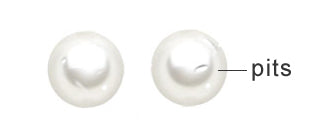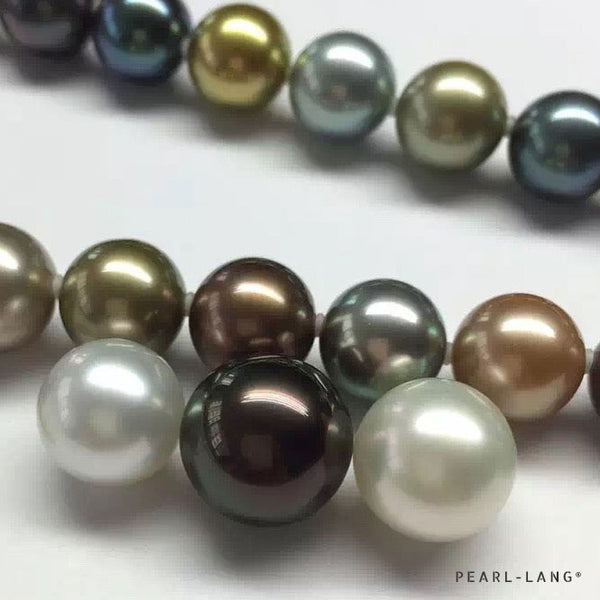Pearl Surface - How Does It Affect A Pearl's Value?

The surface quality of a pearl has a direct impact on its value. Very few pearls are completely blemish-free. The fewer the blemishes are, the higher the value of a pearl. So what exactly do you look for on a pearl’s surface when judging its quality and value?
Check How Visible and Obvious the Flaws Are On the Pearl Surface
The surface condition of a pearl is one of the crucial factors that determine its durability and value. A fine quality pearl should have a bright reflection and smooth surface. But it’s very rare to find pearls with completely flawless surface. Most of them will have some degree of blemishes. So the key to judge the extent to which these blemishes affect a pearl’s value is to examine how visible and obvious these flaws are. The degree of their blemishes can be measured by using the four surface classifications defined by GIA.
- Clean – Pearls have no blemishes at all or contain very tiny surface characteristics that are not visible without using special equipment.
- Lightly spotted – Pearls exhibit minor imperfections when examined by a trained pearl grading person.
- Moderately spotted – Pearls show visible blemishes. A couple of spots on a pearl’s surface might be very noticeable.
- Heavily spotted – Pearls show obvious surface imperfections.

Pearls that are moderately and heavily spotted tend not to be durable and are lower in value even when they have a good lustre. Many Tahitian pearls can be moderately and heavily spotted. Blemishes such as chips, gaps and cracks are the most serious factors that can cause a pearl to peel or break and hence threaten its durability and diminish its value.
Tiny Imperfections On the Pearl Surface Are Normal
Blemishes such as spots, wrinkles and abrasions do not usually affect the durability of a pearl and are very common. However, the value of a pearl depends on how visible these flaws are. If there are quite a few blemishes and they are visible to a naked eye, it’s an indication that the pearl you’re looking at should have a lower value compared to those that have fewer and less noticeable imperfections given all other value factors are equal. Fine quality pearls with clean surface often have no or very tiny flaws that are hardly noticeable.
Pearl Lustre Is The Most Important Factor To Its Value
Apart from looking at how visible the imperfections are on the pearl’s surface, you also want to make sure you examine its lustre. The lustre of a pearl essentially shows how intense the reflections are from its surface. Pearls that have high nacre quality usually have very bright and sharp reflections.

A pearl’s surface quality is usually an indicator of its authenticity. It’s always a good idea to ask your retailers about how they grade their pearl surface and the difference between their products. At Pearl-Lang, all of our pearls have a surface classification of “Clean” or “Lightly Spotted”. By understanding this important value factor, you can find good quality pearl jewellery with confidence.




